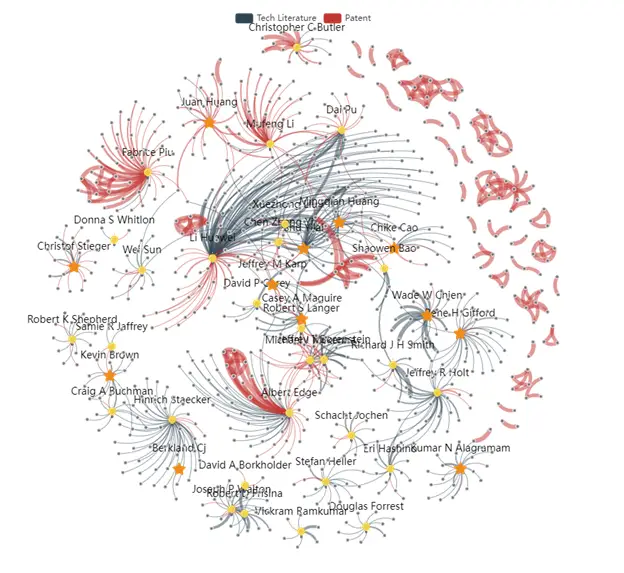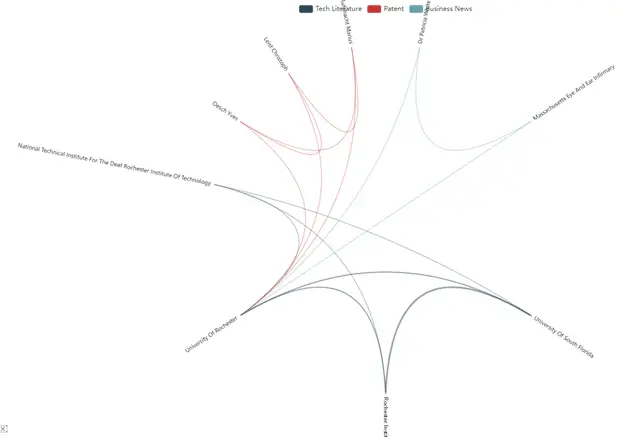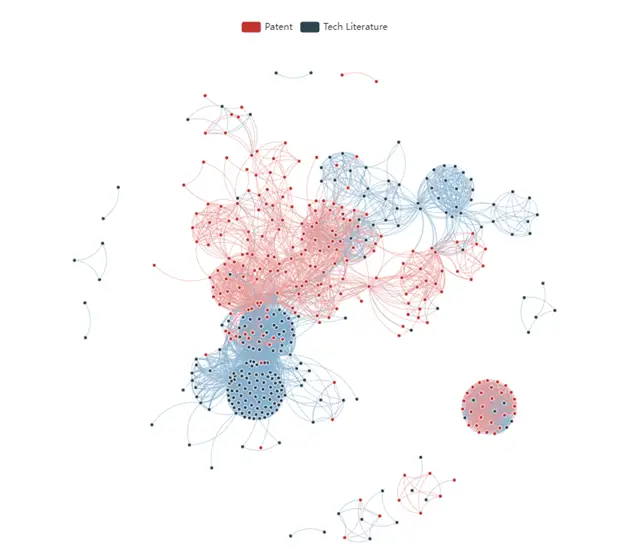CONNECT-THE-DOTS
In today’s rapidly changing business environment, R&D organizations must constantly renew their technology strategies by leveraging both internal and external knowledge. The internal knowledge of an organization represents a unique understanding of its business models and technologies. However, internal knowledge is often limited by the organization’s current perspective, which may not always reflect market trends. In order for organizations to gain a broader perspective and formulate strategies with the most up-to-date and relevant knowledge, external knowledge is valuable because it can provide new perspectives and ideas. By combining external and internal knowledge, organizations can develop powerful strategies, but they will need a strategic and thoughtful approach to overcome the following challenges:
- A key component of leveraging external knowledge is the search and extraction of relevant information, which is a time-consuming and resource-intensive process that requires significant expertise and a good understanding of the current needs of R&D organizations and industries.
- Furthermore, global information sources are increasing exponentially, and data can be found on a wide range of platforms, websites, and databases. In contrast, if relevant information is sourced, access to such a wide range of data can offer many opportunities to R&D organizations.
- In addition, to ensure accuracy and completeness, it is necessary to connect and analyze the information that has been extracted, as well as to triangulate information from different sources.
- As part of the research process, developing an insightful report is also an important component, as it would ensure that key findings are effectively communicated which helps R&D organizations in the overall decision-making process.
SciTech Patent Art (SPA) has developed a platform / tool for connecting-the-dots across many data sources, by adopting a highly time-efficient hybrid approach based on Machine Learning, Deep Web crawling and manual analyst curation. Using high-quality curated data, the platform allows users to connect the dots seamlessly and, in effect, simplifies the insight generation process.
The work process for developing a customized CONNECT-THE-DOTS solution involves the following steps:

A. Defining a sandbox:
In order to gather the most relevant information, it is essential to define the range of boundaries and requirements.
-
- Technology boundary: Specific details to consider when identifying technologies to search for include identifying emerging technologies or specific companies, products, or technologies.
- Data sources: Various data sources can be utilized to extract insights. For example, patents, scientific literature, clinical trials, market research reports, government published data, industry reports, product related information, and so on. To extract the most valuable insights, different data sources may be selected based on the specific needs.
- Requirements for curation: It is important to have a well-developed taxonomy in place, which involves input from subject matter experts. Taxonomy ensures that information is standardized and categorized so that it can be easily reviewed and interpreted.
- Specific user interface requirements: The user interface can be customized to ensure ease of use. In addition to charts, graphs, and maps, the interface will include many other forms of visualization to facilitate the understanding of the information being presented. The interface will offer interactive features such as downloading or sharing of data, filtering, sorting, and drilling down into specific data points, enabling users to explore the information in greater detail.

B. Tool Development:
The IT team at SciTech Patent Art adopts a systematic and collaborative approach for the development of an intuitive and user-friendly platform for our client scientists.
- Communication In order to develop an effective tool that meets the needs of research and development organizations, we ensure that frequent communication and collaboration between SciTech Patent Art experts and client scientists is conducted to ensure that the curation standards are aligned with clients’ specific requirements.
- User trial: Upon completion of the tool, we conduct user trials with the interface to collect feedback from scientists and ensure that the tool is intuitive and effective.
- Refinement and finalization of curation/interface: Following the user trial, our team at SciTech Patent Art makes any necessary adjustments to the taxonomy, user interface, or data before it is deployed for use by the client scientists.
- Set up user accounts: Upon completion of the tool, user accounts and permissions are provided to the client scientists who will be using the tool, as well as training for the scientists on the tool’s functionality.
- Data update requirements: It is essential that the tool remains up-to-date and relevant over time. By setting up regular data feeds from external sources the tool will be updated with latest information. Moreover, routine data validation will be performed to ensure validity and accuracy of data.
- Any other specific technical deep-dive requirements, as needed. For example, if client requires specific customized reporting or analytics feature or integration with other software systems, our IT team will facilitate these requests.
SciTech Patent Art is a 20+ year old technology and patent intelligence firm specializing in patent and scientific literature analysis. As a team of over 100 scientists and technologists, we leverage Machine Learning (ML) tools to uncover insights from a variety of data sources for our clients.
While AI/ML can offer a quick solution, it does not always offer the depth and context scientists need to make informed decisions. SciTech Patent Art’s CONNECT-THE-DOTS solutions combine human expertise with industry knowledge and ML algorithms to provide a more comprehensive approach.
It is important for R&D organizations to obtain unique insights from public information. CONNECT-THE-DOTS is an effective platform/tool for helping R&D organizations explore opportunities and make informed decisions during their research and development activities.
The CONNECT-THE-DOTS solution from SciTech Patent Art offers several benefits, such as:
- Highly focused data sets: The CONNECT-THE-DOTS solution is a highly focused dataset that excludes noise, thus enabling the client to quickly find relevant information. Analysts at SciTech Patent Art are subject matter experts trained to identify the most relevant information according to client requests.
- Custom-curated visualizations: The CONNECT-THE-DOTS solution offer different types of visualizations that generates technically meaningful visualizations that are custom-curated based on search filters.
- Easy-to-use search interface: The CONNECT-THE-DOTS solution provides a search interface designed for scientists and portfolio managers to easily navigate through an extensive dataset to quickly find the relevant information.
- Linkage across data sources: The CONNECT-THE-DOTS solution enables linkage across multiple data sources so that “connections” are easy to see and explore. To gain insights from data, users can explore relationships between different datasets.
- Other benefits: The CONNECT-THE-DOTS solution offers other benefits such as further customizations to datasets by modifying scope or seeking clarifications from the team of analysts.
Today, we have many clients who are seeing wide range of benefits from the CONNECT-THE-DOTS solution from SciTech Patent Art for the following purposes:
- Identifying new and disruptive approaches to solving problems,
- Finding research partners,
- Identifying Key Opinion Leaders or Rising Stars and promising start-ups,
- Analyzing the intent of competitors,
- And many more…
INVENTOR COLLABORATION

ORGANIZATIONAL NETWORK

CLUSTER VISUALIZATION

